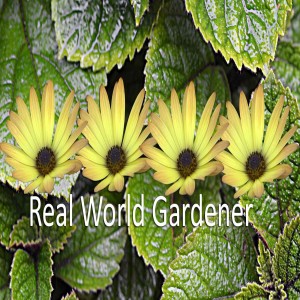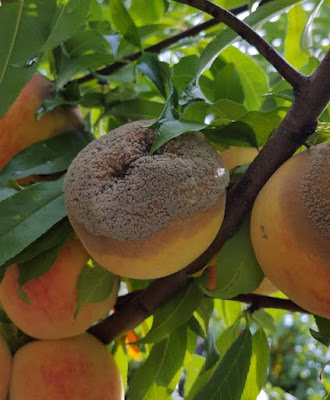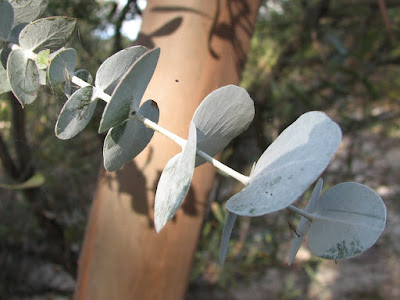
Episodes

Friday Feb 25, 2022
Brown Rot of Stone Fruit in Plant Doctor on Real World Gardener
Friday Feb 25, 2022
Friday Feb 25, 2022
PLANT DOCTOR
Brown Rot of Stone fruit
There’s plenty of cultivars of stone fruit trees that can fit into any size garden.
Trixie and Pixie dwarf nectarine and peach trees have been around for years.
“There’s even a nectarine tree classed as Super Dwarf called ‘ Peach Sunset” that is grafted onto super dwarfing rootstock to produce a more compact tree growing to around 1.5 m tall.
This Nectarine is self fertile so only one tree is needed.
- But before we get too carried away, what are the cons for growing stone fruit?
- Is deciduous a con? Possibly, because stone fruit tree are deciduous so if you don't like the bare look in winter, stone fruit trees are not for you.
- Do you need two trees for fruit set? Not always so do your homework.
- Preventative spraying for peach leaf curl and brown root of stone fruit may be needed.


- The bad news is, it's too late to do something about it now.
You may even have to open the centre of established trees a bit more than usual to increase air flow.
Still, the fruit I ate off my trees this year were super delicious and well worth growing your own stone fruit trees.
Let’s find out
PLAY: Brown rot of stone fruit_16thFebruary 2022That was Steve Falcioni from www.ecoorganicgarden.com.au
If you have any questions you can email us Realworldgardener@gmail.com or write in to 2rrr, PO Box 644 Gladesville NSW 1675.

Monday Aug 30, 2021
Two Silver leafed Eucalypts in Plant of the Week
Monday Aug 30, 2021
Monday Aug 30, 2021
PLANT OF THE WEEK
All About Australian Native Plants with Silver Leaves.
 |
| Eucalyptus perriniana |
pt1 A Couple of Eucalypts with Silver Leaves.
- Two great silver leafed gums were our picks:Eucalyptus perriniana and Eucalyptus cinerea
Silver leaves can be so attractive in the garden, in the vase or just in the landscape.
The add texture and structure to a garden. But they also can brighten a dark spot in a garden where dark green would just disappear in the gloom.
 |
| Eucalyptus cinerea |
Other fabulous silver leafed eucalypts
- You could also try Eucalyptus pulverulenta, known as the Silver-leaved Mountain Gum.
- There’s a dwarf form of this one called Baby Blue which only grows to 3m.
- The Silver-leaved Mountain Gum is an unusual Eucalypt (especially for eastern Australia) because it hangs onto juvenile foliage into maturity. Plants rarely produce adult leaves.
